23 September 2019
Piles of dead mangrove timber up to two metres in height are preventing new mangrove growth over vast areas of the Gulf of Carpentaria.
This follows the 2015 mass mangrove dieback event, which affected over 1000 kilometres of mangroves in the Gulf – the approximate distance between Canberra and Brisbane.
Professor Norman Duke from James Cook University, who leads the National Environmental Science Program’s (NESP) Assessing Mangrove Dieback in the Gulf of Carpentaria project, has just completed the second full aerial survey of the dieback area, covering more than 2000 kilometres between Weipa and Cape Barrow (mainland coast adjacent to Groote Eylandt).
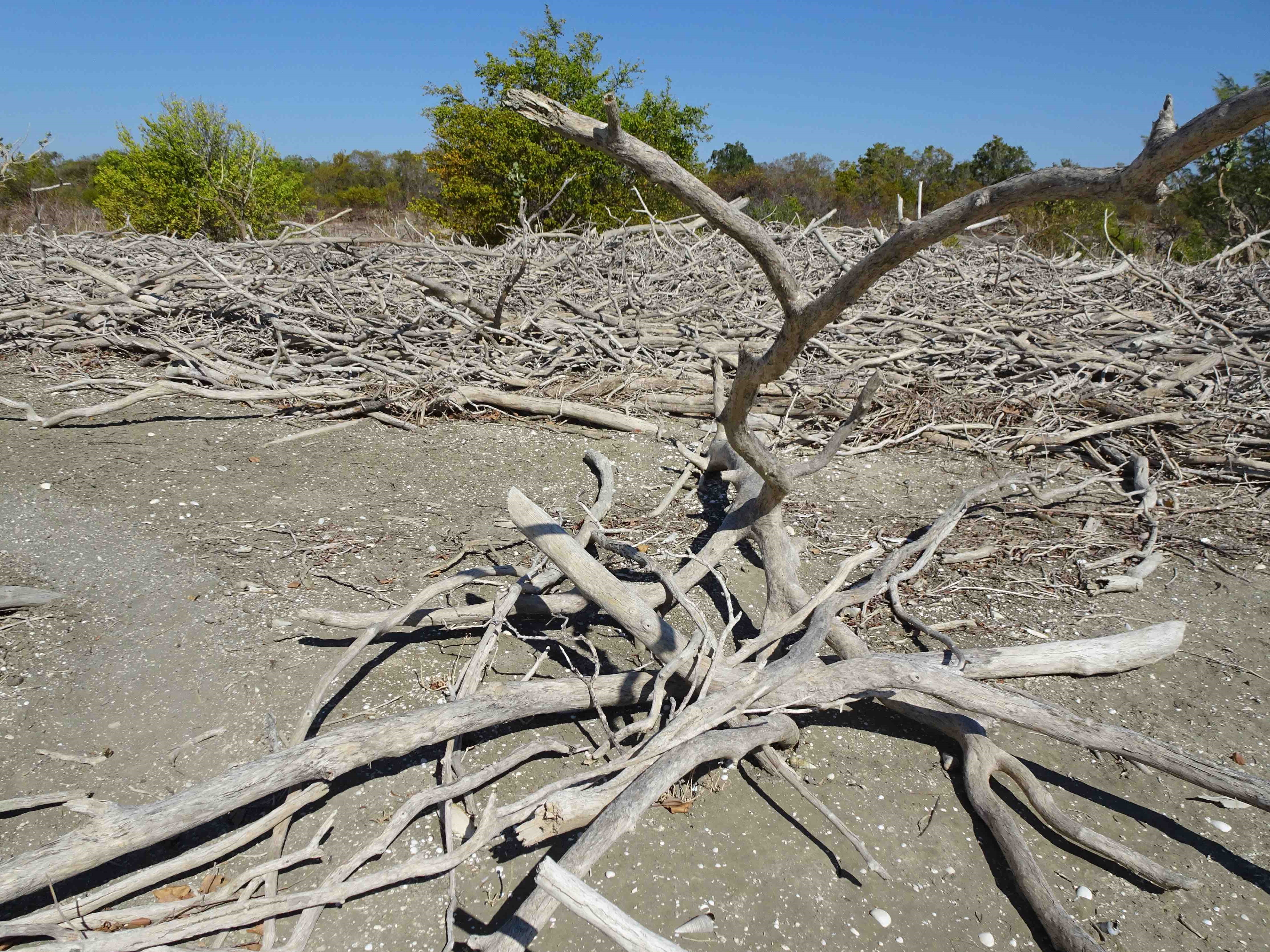
Professor Duke said the dead mangroves are creating one to two metre-tall ‘rafts’ that are piling up on the landward side of the mangroves.
While researchers are seeing new mangrove seedling growth in some places, there was evidence of wear to the seedlings from the dead timber.
Many seedlings have been killed and many others have been seriously damaged by the piles of drifting logs.
“Four years after the dieback event, the dead mangroves are deteriorating rapidly. And while there is recruitment (new growth), the seedlings are being damaged as timber rolls against them with each tide,” – Professor Norm Duke.
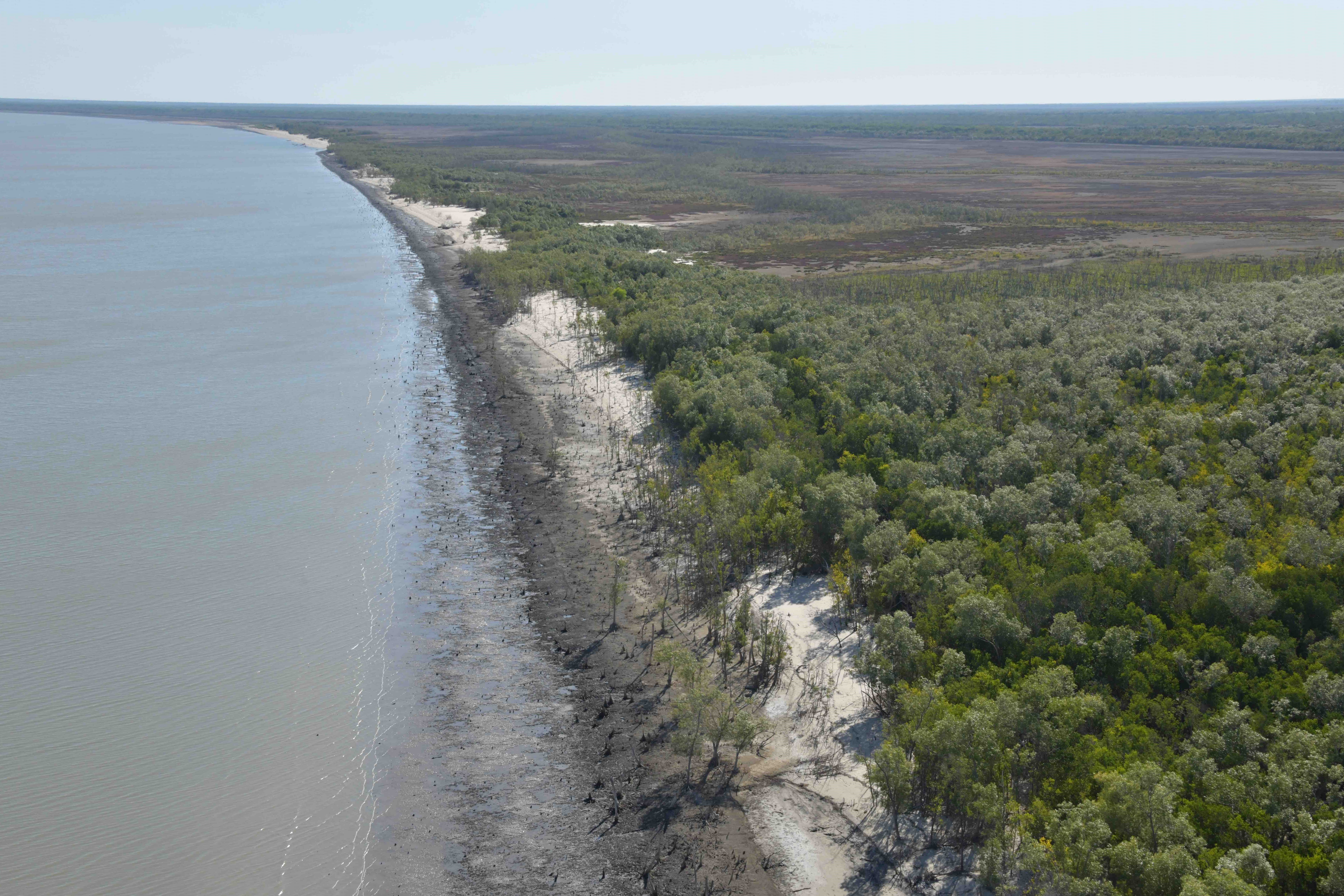
Professor Duke said that as the trees break down, the appearance of the mass event has become less evident from the air, but there remain quite a few dead trees yet to fall.
“Recent cyclones have contributed to the patchiness of standing dead trees along the Gulf coast, leaving some areas entirely denuded. For example, there is regrowth in Karumba sites that isn’t evident in those south of Pormpuraaw, an area more affected by cyclones.” – Professor Norm Duke
The recovering mangroves along the shoreline of the Robinson River in the Northern Territory were heavily damaged by the 250 km per hour winds and the storm surge associated with Tropical Cyclone Trevor in March this year.
“To add to the cyclone’s impact, the drift logs from the 2015 dieback are piled up onto top of surviving trees further back. It’s a mess,” Professor Duke says.
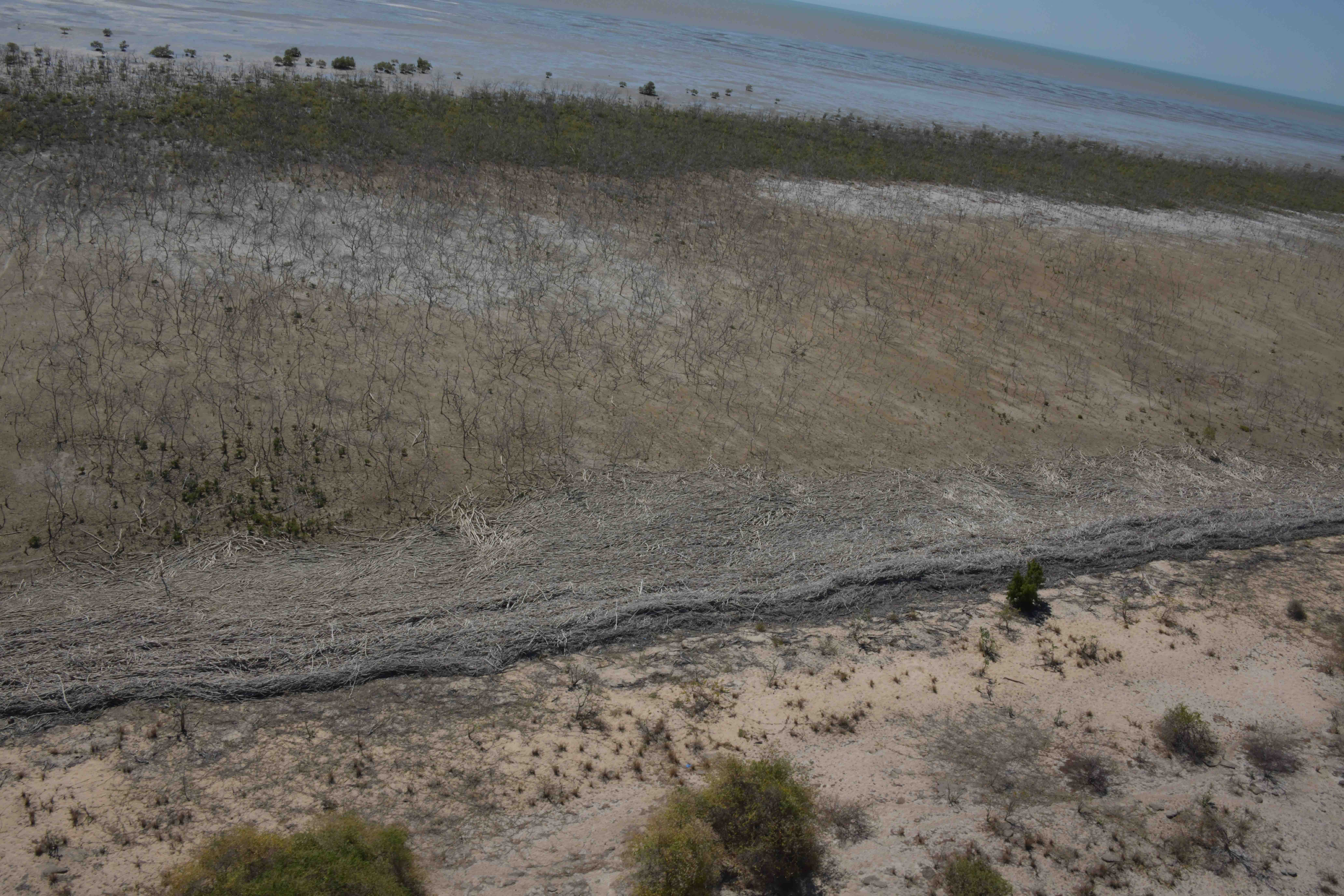
The researchers have also noticed shoreline retreat from the aerial surveys, which may be partially due to loss of mangroves, but also from rapidly rising sea levels in this region (the rates of rise being three to four times the global average).
“We are concerned about the retreating shoreline – and how well, if at all, the mangroves are able to recolonise landward as the shoreline retreats further back – resulting in the land being lost to the sea.
“There is shoreline retreat from where trees have fallen. However, the retreat at the front edge is largely pre-2015 dieback, so this is consistent with the rising sea levels. There needs to be a further study which looks at rising sea levels around the Gulf to understand what is really going on here,” – Professor Norm Duke.
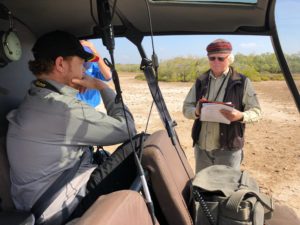
The research team, which included Professor Duke, Dr Jock Mackenzie and Apanie Wood from James Cook University, and ranger groups from across the Gulf, now has two complete series of photographs of the entire coastline between Weipa and Cape Barrow. Over 50,000 images from the recent survey will be compared with those from the 2017 survey to describe and document mangrove recovery since the 2015 dieback event.
Data gathered from eight ground transect sites amongst the mangroves and river mouths will also be compared with data from the 2017 trip, and with other observations recorded by rangers from lands bordering the southern Gulf including Normanton, Burketown, Borroloola, Limmen National Park and Numbulwar.
Professor Duke said the team will ensure the data is shared with multiple groups including Rangers, CSIRO, NRM groups and NGOs.
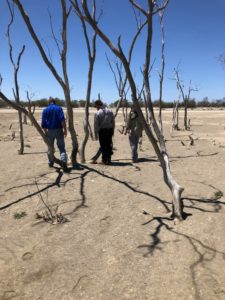
This is the last full survey under the NESP project, with final observations to be available in 2020. Professor Duke plans to continue this work through James Cook University and MangroveWatch.
See the project page for further project information and results.
Want to know more about the Resilient Landscapes Hub's activities and our research into practical solutions to environmental problems? Stay informed about activities, research, publications, events and more through the Hub newsletter.